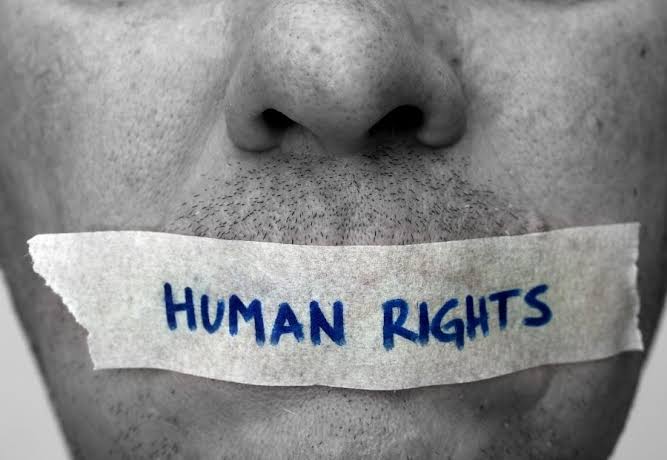Author: Aniket Digra, Thakur Ramnarayan College of Law
Abstract
In July 2024, student protests erupted in Bangladesh over the reinstatement of a government job quota system deemed outdated and inequitable. These protests escalated into a broader movement against authoritarian governance, leading to violent crackdowns and the resignation of Prime Minister Sheikh Hasina. The political crisis raised concerns about human rights abuses, particularly against minority communities, and was further complicated by allegations of foreign interference. An interim government now faces the challenge of restoring stability and addressing the systemic issues that triggered the unrest.
Introduction
In a dramatic turn of events, Bangladesh has been rocked by intense student-led protests that culminated in the resignation of Prime Minister Sheikh Hasina on August 5, 2024. The protests, which began in early July, quickly escalated from demonstrations against the reinstated government job quota system to a broader movement challenging Hasina’s increasingly authoritarian rule. This newsletter explores the origins, escalation, and repercussions of the protests, including the troubling impact on minority communities and the controversial allegations of foreign interference.
The Roots of the Protests: The Quota System Controversy
The quota system for government jobs in Bangladesh, established shortly after the country’s independence in 1971, mandated that 30% of positions be allocated to liberation war fighters. This quota was expanded over the decades to include the descendants of these fighters, people with disabilities, ethnic minorities, and others, eventually covering 56% of government jobs. While intended to address historical injustices and ensure representation for marginalized groups, the system faced increasing criticism for being outdated and creating inequities.
In 2018, a significant student-led movement succeeded in lobbying for the abolition of the quota system. Students argued that the system had outlived its purpose and perpetuated unfairness in job distribution. The government agreed, leading to the dismantling of the quota system. However, this decision faced legal challenges, and in June 2024, Bangladesh’s high court ruled that the abolition was unconstitutional, leading to the reinstatement of the quota system.
The Spark of Protests: From Grievances to Uprising
The high court’s decision to reinstate the quota system ignited a wave of student protests starting on July 1, 2024. The protests began at the University of Dhaka and quickly spread to other elite universities and to the general public. Initially, the demonstrations were peaceful; focusing on the perceived injustice of reintroducing a system many believed to be outdated and unfair.
Tensions escalated as the protests gained momentum, drawing support from various segments of society disillusioned with the government. The movement’s demands expanded beyond job quota reform to broader calls for political reform and an end to perceived autocratic governance
The situation took a critical turn when Prime Minister Sheikh Hasina compared the protesters to “razakars,” a term used for collaborators with Pakistani forces during Bangladesh’s war of independence. This comparison deeply offended many protesters, who began to use the term as a symbol of their resistance.
Government Crackdown and Violence
The government’s response to the growing unrest was swift and severe. Pro-government groups, particularly the Awami League’s student wing, the Bangladesh Chhatra League (BCL), began attacking protesters. The violence quickly escalated, with clashes between students and BCL members, and police interventions intensifying.
Prime Minister Hasina’s administration deployed police and paramilitary forces to suppress the protests, resulting in a brutal crackdown. Reports indicate that more than 300 people were killed over the course of the month-long unrest. The use of force, including a “shoot on sight” order, and subsequent curfews and communication blackouts, only fueled further public anger and mobilized more people against the government.
The Impact on Minorities
The crackdown had a disproportionate impact on minority communities in Bangladesh. In particular, reports emerged of targeted violence against ethnic minorities, including indigenous groups in the Chittagong Hill Tracts and other marginalized communities. These groups, who have long faced discrimination and exclusion, found themselves further victimized by the state’s heavy-handed response.
Human rights organizations have condemned the government’s actions, highlighting instances of arbitrary detention, extrajudicial killings, and other abuses. The militarized response and violence against minorities underscore the broader issues of inequality and marginalization that have plagued Bangladesh’s political landscape.
Political and Social Repercussions
The protests, initially sparked by a specific issue regarding job quotas, evolved into a broader movement against authoritarianism and governance issues. The heavy-handed response by the authorities, including violent crackdowns and widespread human rights abuses, intensified public outrage and led to widespread demonstrations across the country.
The unrest reached a critical juncture on August 5, when the army chief announced Prime Minister Sheikh Hasina’s resignation. The resignation came amid ongoing protests and violent clashes, which had plunged Bangladesh into a particularly dangerous phase. Hasina’s departure was accompanied by the formation of an interim government, marking a significant shift in the country’s political landscape.
Allegations of Foreign Influence
The scale of the protests and the government’s violent crackdown drew significant international attention. Speculation has arisen regarding potential foreign influence behind the unrest. Some observers have suggested that external actors, including the CIA and intelligence agencies from the USA and UK, may have played a role in exacerbating the situation.
These allegations, while not substantiated, reflect broader geopolitical interests and concerns about regional stability. The notion of foreign involvement underscores the complexity of the situation and highlights the need for a nuanced understanding of the political dynamics at play in Bangladesh. It also raises questions about the extent to which external factors may influence domestic political upheavals.
The Formation of an Interim Government
With the resignation of Prime Minister Hasina, an interim government has been established to stabilize the situation and address the demands of the protesters. The interim administration faces the challenge of managing public expectations and navigating the post-protest period. It will need to address the underlying issues that led to the widespread unrest, including concerns about political representation, governance, and human rights.
The interim government’s ability to respond effectively to these challenges will be crucial in determining the future stability of Bangladesh’s political environment. The country stands at a crossroads, with the potential for significant reforms and a move towards a more inclusive and democratic political system.
Conclusion
The resignation of Prime Minister Sheikh Hasina marks a significant turning point in Bangladesh’s political history. The student-led protests, initially focused on job quota reform, evolved into a broader movement against authoritarianism and governance issues. The government’s heavy-handed response, characterized by violence and human rights abuses, only fueled public outrage and led to Hasina’s resignation. As the country navigates this tumultuous period, the challenge will be to address the underlying issues that led to the unrest and to build a more inclusive and democratic political system. The impact on minority communities and allegations of foreign involvement further complicate the situation, underscoring the need for a careful and balanced approach to ensuring stability and progress in Bangladesh.
FAQS
1. Why did the protests in Bangladesh begin?
The protests began due to the reinstatement of the government job quota system, which many saw as outdated and discriminatory.
2. What led to Sheikh Hasina; s resignation?
Hasina’s resignation was driven by sustained protests, public outrage over the government’s violent response, and growing demands for political reform.
3. Were there human rights violations during the protests?
Numerous reports documented extrajudicial killings, arbitrary detentions, and targeted violence against minorities, leading to widespread condemnation from human rights organizations.
4. What are the allegations of foreign involvement?
Unsubstantiated claims suggest that foreign intelligence agencies, including the CIA and UK
Intelligence may have played a role in exacerbating the protests.
5. What is the role of the interim government?
The interim government is responsible for stabilizing the country, addressing the protesters Demands, and ensuring a peaceful transition toward more democratic governance.
References
United States Institute of Peace (USIP). (2024, July). What’s behind Bangladesh’s student protests. https://www.usip.org/publications/2024/07/whats-behind-bangladeshs-student-protests
NDTV. (2024, July 25). Explained: What’s behind Bangladesh protests that have killed 39. https://www.ndtv.com/world-news/explained-whats-behind-bangladesh-protests-that-have-killed-39-6138968
Business Standard. (2024, August 9). Bangladesh protests echo past student uprisings that sparked radical change. https://www.business-standard.com/world-news/bangladesh-protests-echo-past-student-uprisings-that-sparked-radical-change-124080900493_1.html
New York Times. (2024, August 15).Bangladesh student protests https://www.nytimes.com/article/bangladesh-student-protests.htmlhttps://www.nytimes.com/article/bangladesh-student-protests.html






